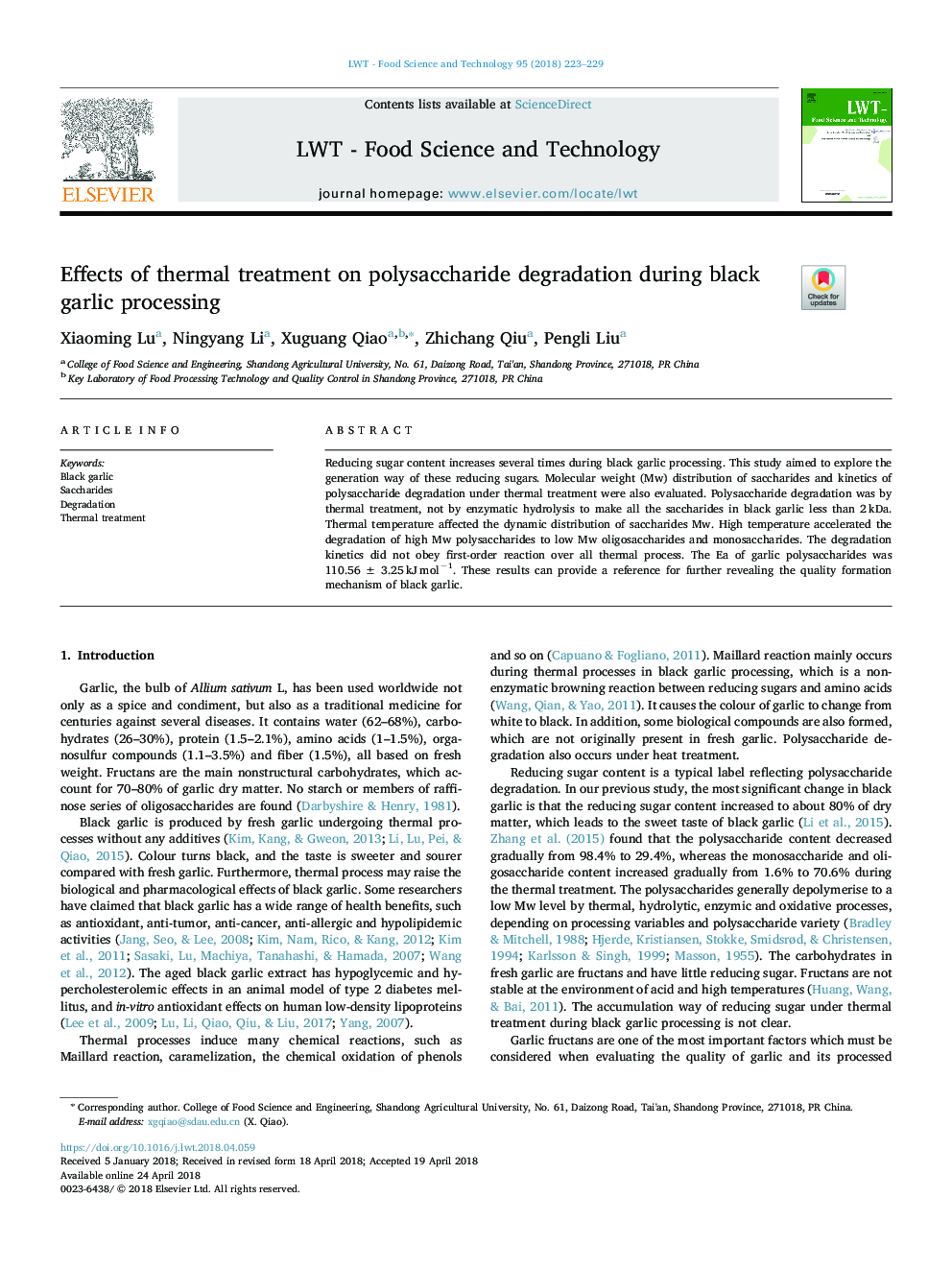| Article ID | Journal | Published Year | Pages | File Type |
|---|---|---|---|---|
| 8891036 | LWT - Food Science and Technology | 2018 | 7 Pages |
Abstract
Reducing sugar content increases several times during black garlic processing. This study aimed to explore the generation way of these reducing sugars. Molecular weight (Mw) distribution of saccharides and kinetics of polysaccharide degradation under thermal treatment were also evaluated. Polysaccharide degradation was by thermal treatment, not by enzymatic hydrolysis to make all the saccharides in black garlic less than 2â¯kDa. Thermal temperature affected the dynamic distribution of saccharides Mw. High temperature accelerated the degradation of high Mw polysaccharides to low Mw oligosaccharides and monosaccharides. The degradation kinetics did not obey first-order reaction over all thermal process. The Ea of garlic polysaccharides was 110.56â¯Â±â¯3.25â¯kJâ¯molâ1. These results can provide a reference for further revealing the quality formation mechanism of black garlic.
Related Topics
Life Sciences
Agricultural and Biological Sciences
Food Science
Authors
Xiaoming Lu, Ningyang Li, Xuguang Qiao, Zhichang Qiu, Pengli Liu,
